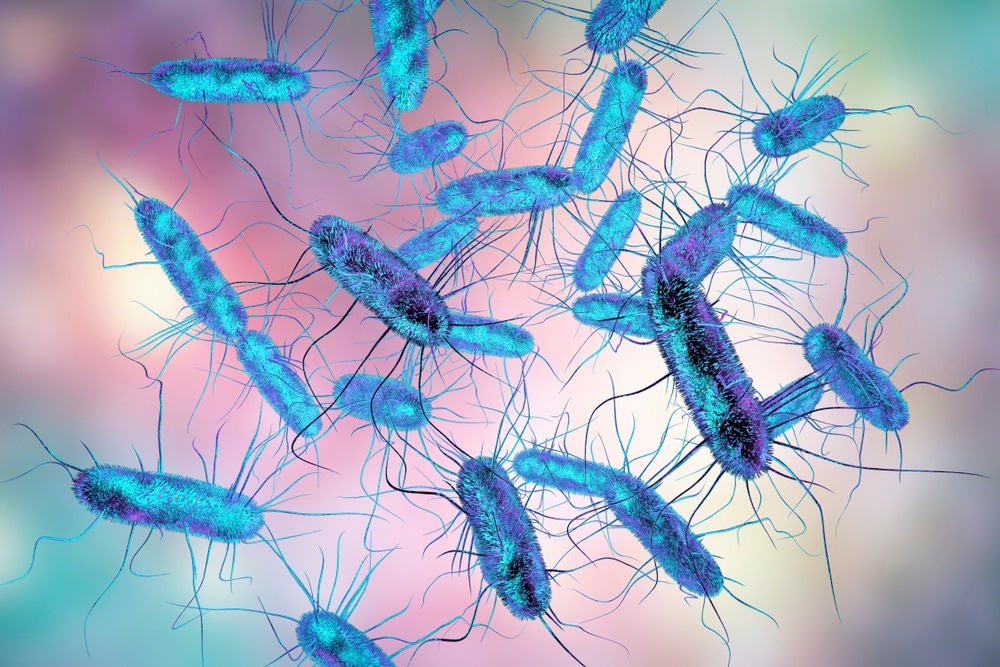Early this year, in April, a cluster of food poisoning cases was reported in the East of England. The causative organism was shown to be Salmonella enteritidis infection, and the initial outbreak was linked to one restaurant. However, other cases have been found that have no known links to this restaurant.
 Study: Local Salmonella Enteritidis restaurant outbreak investigation in England provides further evidence for eggs as source in widespread international cluster, March to April 2023. Image Credit: Kateryna Kon/Shutterstock.com
Study: Local Salmonella Enteritidis restaurant outbreak investigation in England provides further evidence for eggs as source in widespread international cluster, March to April 2023. Image Credit: Kateryna Kon/Shutterstock.com
A new paper published in Eurosurveillance reports the results of an investigation aimed at identifying the common source of exposure for the cluster of cases to help pinpoint the probable origin of the infectious agent and thus promote control measures.
Introduction
All the cases identified belonged to a single cluster showing a group of single nucleotide polymorphisms (SNPs) in a 5-nucleotide stretch. However, internationally the outbreak extended to several countries, with the genomic diversity spreading over 10 SNPs – including the above 5-SNP cluster.
The outbreak was first reported in late March of 2023, and S. enteritidis infection was confirmed. Routine sequencing was done, showing the presence of the 5-SNP cluster that identified it to be part of a larger group underlying multiple outbreaks in several countries.
All confirmed cases were those with confirmed infection with the above agent and with the hallmark 5-SNP cluster in their genomes. People who ate at the restaurant between the period March 1 to April 1, 2023, and developed gastroenteritis or had confirmed Salmonella infection were probable cases.
The food history and menu-specific consumption history were taken from all cases who had a history of eating or taking out food from the restaurant. Others filled out a questionnaire relating to putative poultry-related Salmonella exposure.
What did the study show?
Of the 65 cases in the outbreak, 43 cases were linked to the restaurant. Among these, 25 were confirmed, and 18 were probable. In addition, the researchers found 22 more confirmed cases without known links to this eating place. However, all cases did not participate in the study.
The mean age of cases was 32 years, and most lived in the region of the restaurant. The onset of gastroenteritis was between March 17 to April 17, 2023. Most developed vomiting, diarrhea, abdominal pain, and fever.
In most cases, the symptoms began within 24 hours of eating at the restaurant. Among exposed cases, 31 fell ill on March 30, 2023, after eating there the previous day.
While most consulted a healthcare professional, ten cases of 34 required hospitalization. An attempt to garner an adequate number of controls failed as most cases said those who ate at the restaurant with them also became symptomatic.
Using the restaurant’s purchase data, the investigators conducted further detailed analysis to arrive at an estimate of the total number of exposures, that is, diners exposed to the infectious agent.
Of the 31 cases, menu-based exposure data were obtained from 19, but generic food questionnaire data only was available from 12 cases. The data showed higher odds of infection among those who ate egg or chicken, accounting for about 25 of these cases. Since both foods were eaten together in all cases, there was no way to distinguish between them as the source of infection.
Sampling of remaining food items was not possible because none were left on April 4, 2023, when the sampling team arrived. Safety and contamination concerns were allayed by the visit. The team found that raw eggs were used in garlic mayonnaise and to make the yeast flatbread called naan.
While chicken consumption cannot be ruled out as the source at this stage, the high odds ratio for definite egg consumption in combination with the food chain investigation results would suggest that the eggs were the main source of the restaurant outbreak.”
The chain of supply was traced, finding that the eggs came from wholesalers who brought them in from Poland. In two unlinked cases, too, the eggs came from Poland.
The researchers concluded that the cases linked to the restaurant came from a single exposure, either through one batch contaminated with the organism or because of failure to adhere to hygiene procedures in one instance. The official investigators repeated the regulations for food safety while advising the restaurant operators to use another source of eggs, preferably domestic, under a farm certified for safety.
They also conveyed the information that indicated a link to the probably contaminated eggs to Polish authorities for further action. Two more cases were reported by the end of June.
What are the implications?
Poultry has often been identified as the major cause of Salmonella-related food poisoning outbreaks. In the current study, the ability to share data regarding case occurrence, case characteristics, and other epidemiological data, along with that relating to ingested food and microbiological studies, proved its value in helping to identify the strain responsible.
In addition, such research would help identify pathogens that may cross borders to cause global threats, as well as their potential chains of spread via food supply networks.
The 5-SNP cluster of S. enteritidis is part of a more diverse endemic cluster of 10-SNPs, that has been seen to occur after eating chicken meat or eggs across Europe. The presence of this cluster in all cases from one restaurant over a short period helped narrow down the food chains that could potentially be involved.
Similar sequences have been posted elsewhere in the world, showing the possibility of outbreaks caused by the same or closely related organism. The current study is expected to contribute to “contribute to the evidence base to understand better and control the sources of this complex international cluster.”